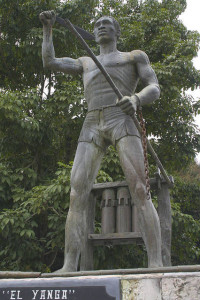WSJ Historically Speaking: A British Milestone in the Fight for Freedom
The British officially abolished slavery throughout their empire on Aug. 1, 1834, freeing some 800,000 Africans from bondage. The date should be forever commemorated—but so should slavery’s own history of resistance and rebellion.
That slaves have always found ways to rebel is reflected in the earliest surviving legal texts. In the 21st century B.C., King Ur-Nammu of Ur, an ancient city in what is now Iraq, proclaimed that “if a slave escapes from the city limits and someone returns him, the owner shall pay two shekels to the one who returned him.”
As slavery became more deeply ingrained in society, so did the nature of the resistance. The Greeks were severe toward rebellious slaves. But no society was as cruel or inventive as Sparta. Having subjugated the neighboring Messenians into helotry in the seventh century B.C. (helots were the property of the state), the Spartans inflicted a reign of terror on them: During annual culls, young warriors were encouraged to hunt and kill the strongest helots.
A catastrophic earthquake in 464 B.C. prompted a short-lived rebellion, but the helots remained trapped in their wretched existence for another century. Finally, another opportunity to revolt came in 371 B.C. after the city-state of Thebes defeated Sparta at the Battle of Leuctra. Aided by the victorious Thebans, the Messenians rose up and drove the Spartans from their land.
No slave rebellion against Rome was that successful. But the slave revolt led by Spartacus in 73 B.C. terrified the Romans into a fierce response. After defeating him at the battle of Silarus River in 71 B.C., the Romans crucified all the survivors.
A catastrophic earthquake in 464 B.C. prompted a short-lived rebellion, but the helots remained trapped in their wretched existence for another century. Finally, another opportunity to revolt came in 371 B.C. after the city-state of Thebes defeated Sparta at the Battle of Leuctra. Aided by the victorious Thebans, the Messenians rose up and drove the Spartans from their land.
No slave rebellion against Rome was that successful. But the slave revolt led by Spartacus in 73 B.C. terrified the Romans into a fierce response. After defeating him at the battle of Silarus River in 71 B.C., the Romans crucified all the survivors.
That insight took a very long time to spread. The Baghdad-based Abbasid Caliphate, which began in 750 and lasted five centuries, imported hundreds of thousands of East African slaves (known as Zanj) to work on the land. The Zanj rebelled in 869, sweeping opponents before them. The Abbasids clawed their way back, finally achieving victory after 14 yesars of continuous fighting.
The Islamic world never again faced such a formidable slave revolt. But when Europe revived the African slave trade in the 1500s, it discovered that the spirit of resistance remained undimmed. In Veracruz, Mexico, there is a statue paying tribute to Gaspar Yanga, who instigated the first successful African slave revolt in the Americas. Having fought off the Spanish colonists in 1570, Yanga founded the free township of Yanga, which exists to this day.
Where Yanga led, hundreds more followed—including Toussaint L’Ouverture, Nat Turner, Harriet Tubman and Frederick Douglass—using both violent and nonviolent means. Edmund Burke wrote that slavery “grows on every soil.” So does the determination to be free.

